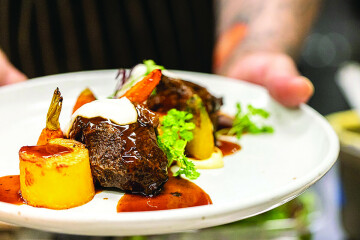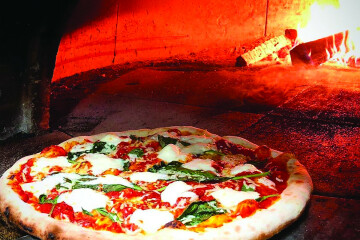I-Ho’s Korean Grill
Jin-Ju Jahns was born in Missoula, Montana to I-Ho and Derek Pomeroy. Her journey unfolds as a tale of returning to her roots, with an added twist to the Pomeroys’ family narrative. Jin-Ju met her husband, John, in Germany just over a decade ago; they married and had two children in Europe. While I-Ho and Derek were visiting them there, the four had an important conversation that came down to: “We would love for you to come to Bozeman and continue the legacy of I-Ho’s Korean Grill, and if you wish to take charge, we will build a new restaurant for you.”
John and Jin-Ju Jahns have been in Bozeman since the beginning of 2022, embracing this new challenge. John and I sat down on a bustling afternoon in the dining room of I-Ho’s Korean Grill at 321 W Main St. (next to the Gallatin History Museum), to delve into the various changes that have shaped this iconic Bozeman business over the past few years.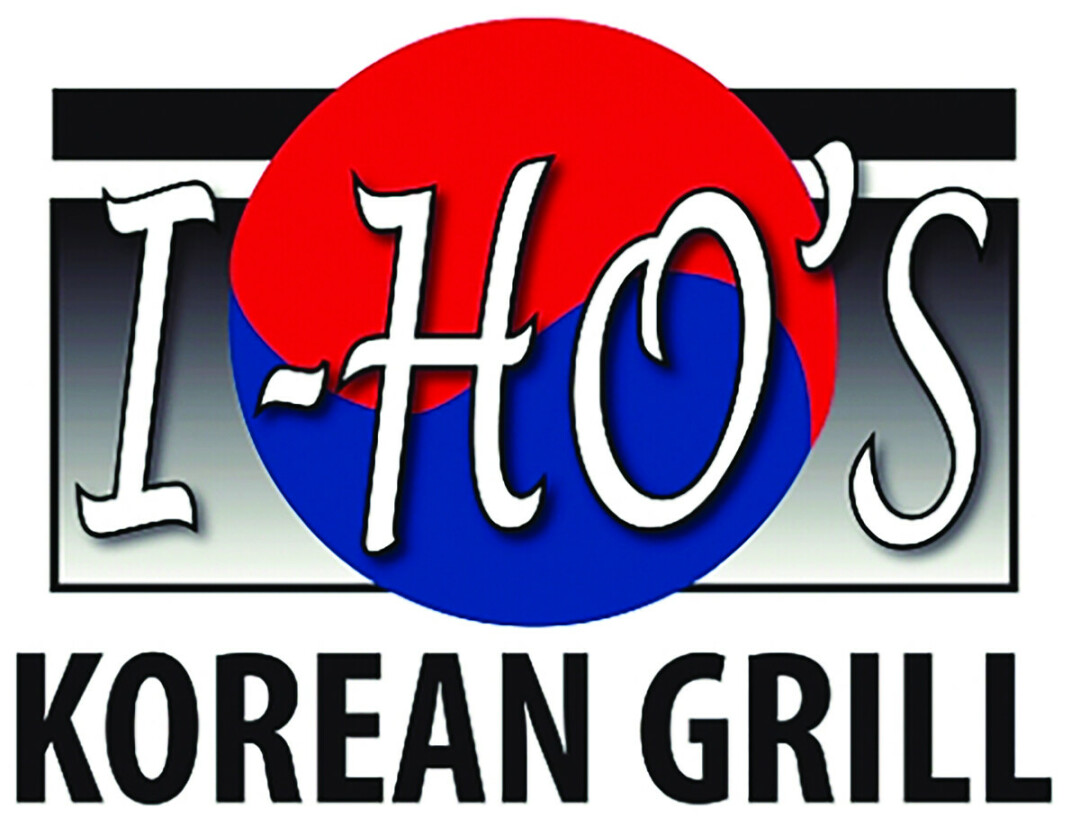
Angie Ripple: How was I-Ho’s Korean Grill conceptualized?
John Jahns: It really is an interesting history. It started out as a food cart. Derek, I-Ho’s husband, built the cart for her. At the time, the health code stipulated that there must be four running sinks with hot and cold water, so he built it [to code]. Hers was one of only two food carts in Bozeman. The hurdle of the sinks dissuaded a lot of competitors, who did not have the correct amount of sinks for approval, which allowed I-Ho and one other cart to corner the market.
After the cart, she was in Granny’s Donuts, then next door at the location that lasted the longest, on Lincoln Street. Then [she was located] by the Gallatin Valley Mall, and now, for the past two years, in the alley at 321 West Main Street.
I worked in Big Tech before coming to Bozeman, and I’ve seen gritty people; they don’t hold a candle to her. I’ve seen real grit in her; the way she’s done it is really phenomenal. That was part of our initial conversation in Germany… it’s always been important for I-Ho to be a part of the community, to participate in and donate to local fundraisers. The way she’s done it, it’s brilliant.
Since taking over operations, we have worked to standardize a lot of things, because the recipes didn’t exist anywhere but in I-Ho’s head. So, last year, the whole year, we learned the recipes from I-Ho; then, we put them to paper, and we now have a cookbook. Basically, we put to paper her recipes. The changes we’ve made include the quality of the ingredients: in terms of the beef, now it is local beef, and we are getting as much local produce as possible. In the summer, Sugar Beets provides us with Napa cabbage for our kimchi, as well as zucchini, but that’s seasonal. We can’t go year round, but then we get that from Town and Country, which sources it as locally as possible.
So, those values that I-Ho has sort of enshrined, they keep going. We source everything as locally as possible. We still do the occasional run to Seattle to get Korean ingredients like the gochugaru, the red pepper flakes.
AR: What would you like people to experience when they walk through your doors?
JJ: Familiarity, a slice of home. We get a lot of customers who tell us it’s their comfort food. ‘What do you mean? You’re not Korean.’ And they say, ‘I grew up here, and I-Ho’s has been around since then.’ It’s like going to Granny’s Donuts, it’s just a staple. And that’s the familiarity—dare I say, home cooking.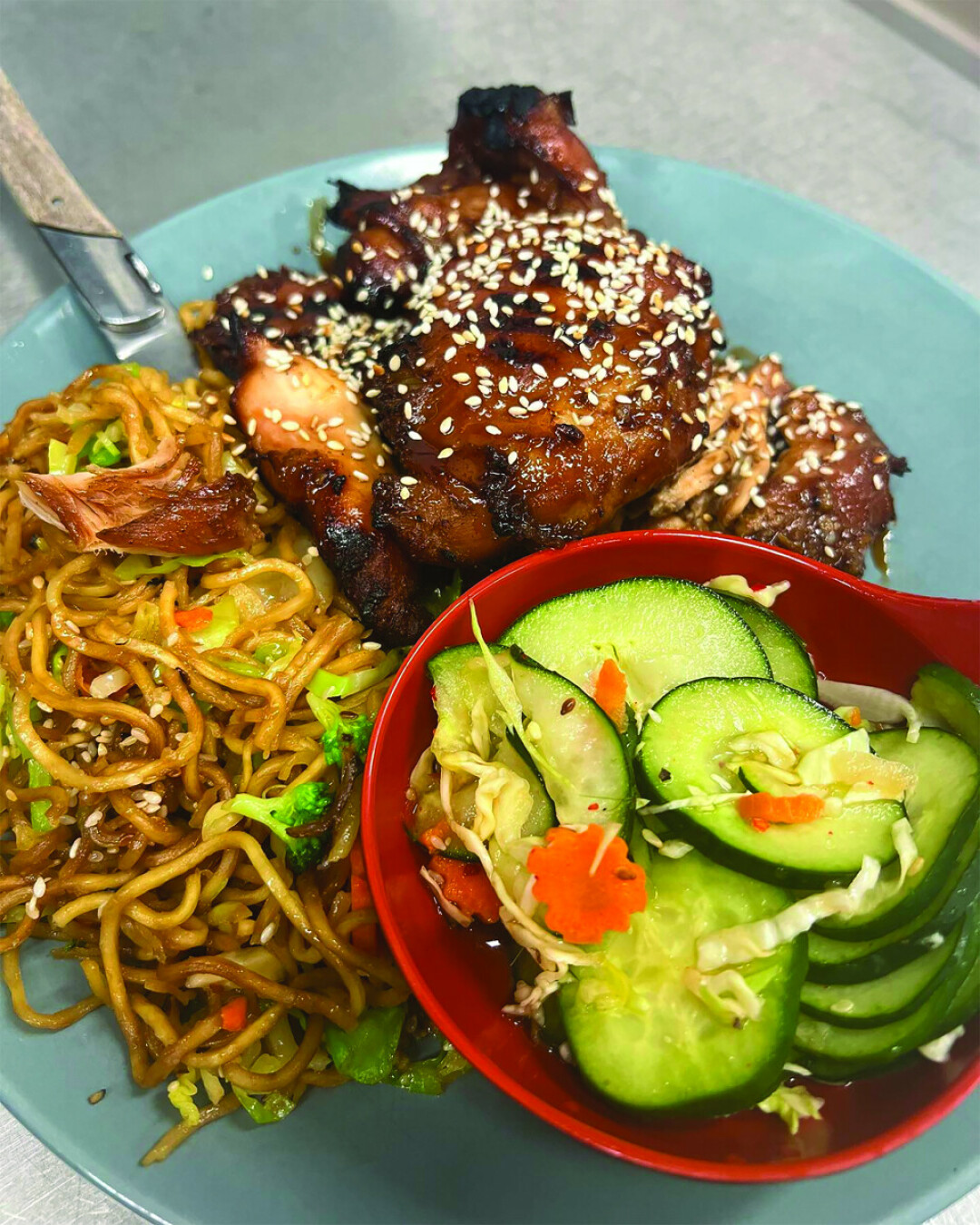
AR: What menu items do regulars keep coming back for?
JJ: Statistically by far, leaps and bounds over the rest, is the Sizzling Bi-Bim-Bob. The next is Teriyaki Chicken, then Dak-Gal-Bi, and the Combination Platter. The trailer right now is a variant of the Sizzling Bi-Bim-Bob, which I’ve created and am calling the John Special. I wanted a quick lunch and I was burning my mouth on the hot silver bowl, so I experimented and created something that is basically the Yaki-Mandu with chicken. It’s not heavy like beef or pork, and it will be in front of you in 10 minutes. You can be done in another ten and be back at the office in another ten. An excellent quick lunch.
AR: Do you have a personal favorite menu item besides the one you just mentioned that you conceptualized yourself?
JJ: Well, the John Special I ate regularly for about six months; then I started experimenting, because our menu had become so big I was trying a lot of different combinations of everything we have. I’ve come up with something—there’s no real name for it—Carpaccio is the cut. So we call it the Korean Carpaccio, and we came up with K-Popccio, because K-Pop creates K-Popccio. We serve it with our Korean barbecue. It’s taking that cut of meat, putting it on the grill with salt and pepper, very plain, and putting that on the Sizzling Bi-Bim-Bob, trying to do a combination that people will like. So that’s what I’m experimenting with right now, just taking stuff out of the kitchen and putting it together. And the cooks look at me and say, ‘that doesn’t work.’ And I say, ‘don’t hate it until you try it.’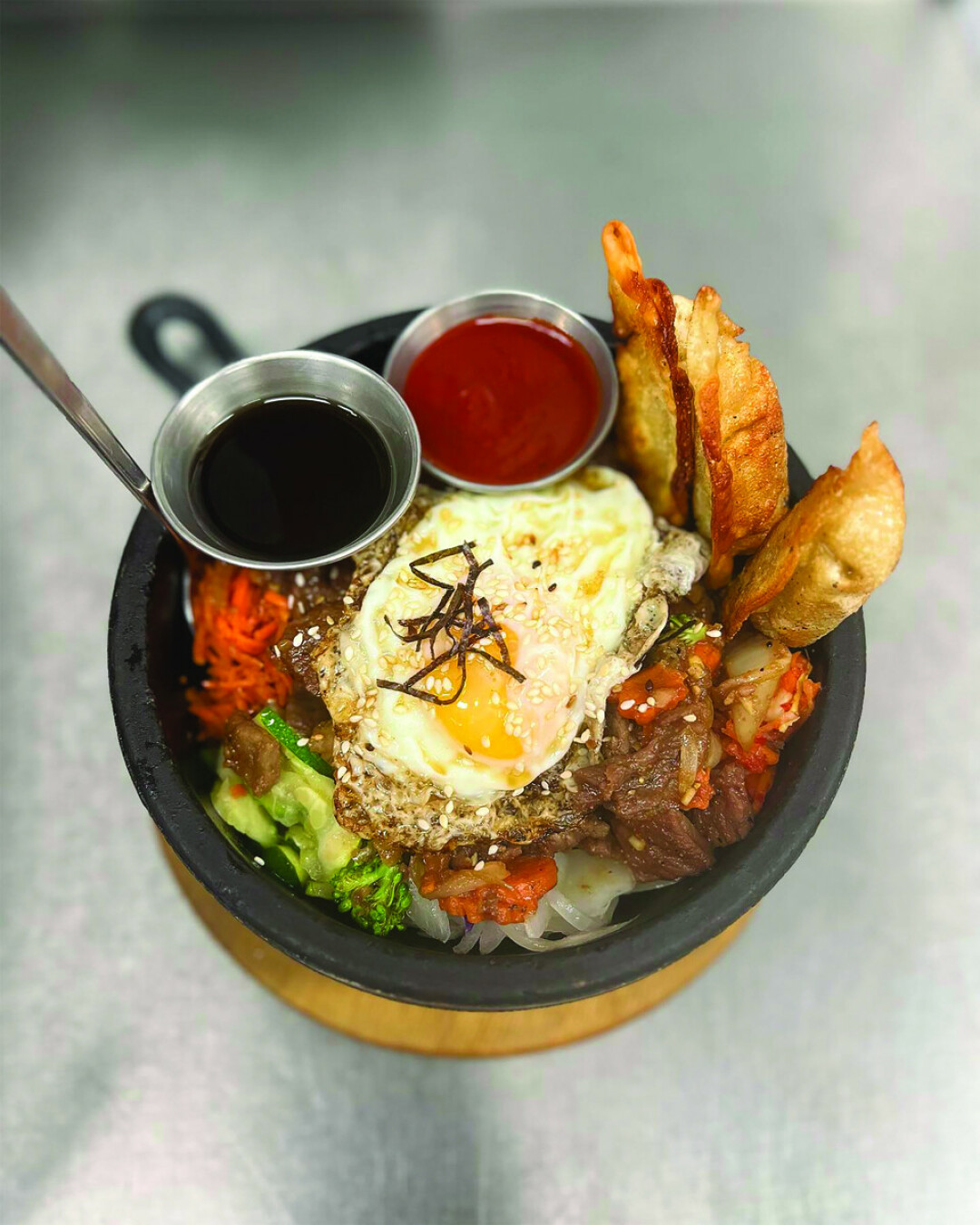
AR: What was your experience with food before all of this?
JJ: My parents are hoteliers. One is from the operations side, one is from the kitchen side. I grew up in hotels and restaurants. I had been living in Korea for three years, during the Olympics in 1988. Korean food is wonderful; there are so many variants. I have experimented with a lot of food. It took me 25 years to learn how to make tomato sauce properly. I learned from an Italian who did a cured pig’s cheek; it’s a tomato-based sauce with white wine, to lift after sautéing onions and garlic. I’ve experimented with Filipino food, Asian food, and Spanish food. I’ve lived in more than a dozen countries. As a kid, I was mostly in Southeast Asia: Hong Kong, Korea, Singapore, Philippines, Germany, Austria and the U.S. So, I really like fusing food together.
AR: What would you say makes I-Ho’s unique in the Bozeman food scene?
JJ: Well, we have a Korean barbecue, which nobody else in town has, which we’ve had for about six or seven months now. The food cart comes out with raw meat, pork, chicken, Yaki-Mandu, rice, kimchi, and you cook it yourself. One person is designated the cook, and we relay simple instructions. It’s really the difference between eating and dining. Less of, ‘let’s eat, what do you want?’ More of an opportunity to just enjoy your company, have your drinks, and plan to spend one to two hours.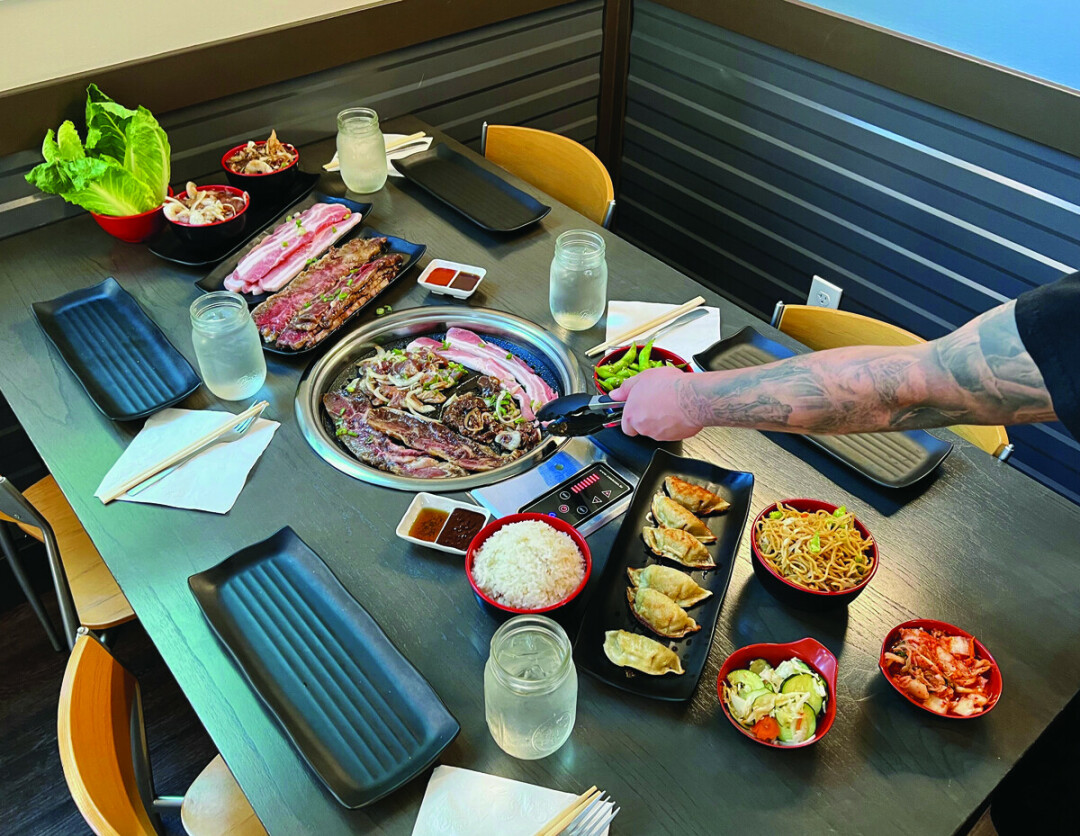
AR: Is it something you have to make a reservation for?
JJ: You can walk in, but we do encourage that you reserve it, because we currently have only two tables.
AR: What do you personally enjoy most about the Bozeman community?
JJ: So, that’s two parts: the area is beautiful; Bridger Bowl is 20 minutes away, hiking is, whatever, zero minutes… it’s any direction you go. The trail system that begins Downtown, Main Street to the Mountains, I just love that path system. Just the outdoors, that’s why I love it here.
On top of that, the community side; everybody is just really supportive. I grew up in a city with 22 million people. I moved to a small city with 1.4 million people in Vienna. And then I moved to Bozeman, at the time, 55,000 people; now 58,000, I believe. And it feels like everybody knows everything.
AR: Is there anything coming up that readers should know about?
JJ: We are opening up next year in the mornings from 8-11 am, as a Korean Tea House, with live classical music. We plan on opening the patio here for the summer with a Spanish tapas-style menu, but Korean. In Korean, you call that Ban-chan. The patio will be inviting, so you can stay, have drinks and listen to acoustic music and enjoy Ban-chan.
We currently are having happy hour now from 3 to 5 pm, Monday through Thursday. During the summer, it’ll be till 6 pm. On Fridays, beginning the 2nd Friday of January 2024, we will offer Family Happy Hour, which is different from normal happy hour. So the happy hour is, say, Korean chicken wings and a beer, packaged together at a discount. Family Happy Hour was conceptualized for kids and parents, so it is all you can eat Ban-chan. You can have as many as you want; it’s not traditional Korean, and the menu will change each month. Family Happy Hour costs are $12 for ages eight and up, $7 for ages seven and under, and $5 beer and wine for parents. We’re trying to help parents get the weekend started off right, get the kids to bed full on Friday, and relax for the weekend. Also, we now cater for weddings… business catering and the like.
AR: One last thing I want to ask about is I-Ho’s health?
JJ: I-Ho is doing great. She got a great report from her doctor, she is doing maintenance chemo. She’s up and about, she goes to yoga… my wife goes with her two to three times a week. She’s visiting with a lot of friends, and really enjoying life. She gives us some advice here and there, but she has taken a step back and we’ve taken it out of her hands.
The I-Ho’s story is one of family, community, impact and legacy. Under the direction of John and Jin-Ju, it will continue to be a Bozeman staple for many years to come.

